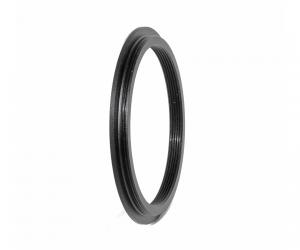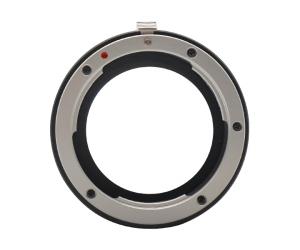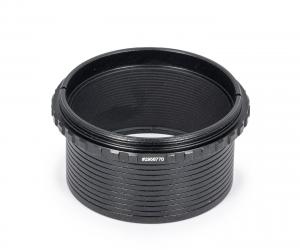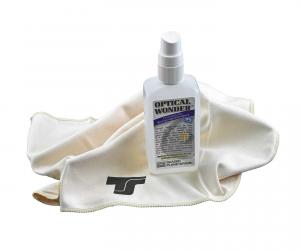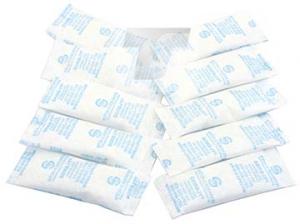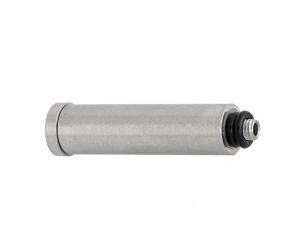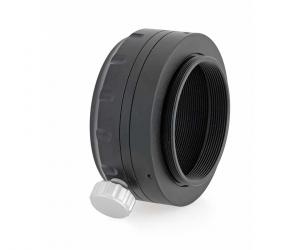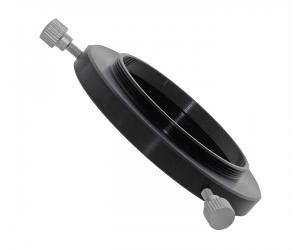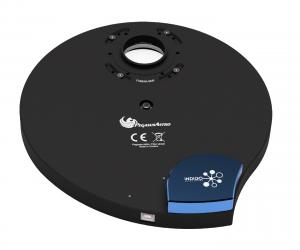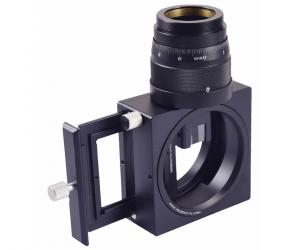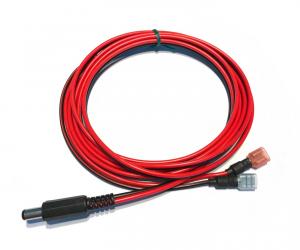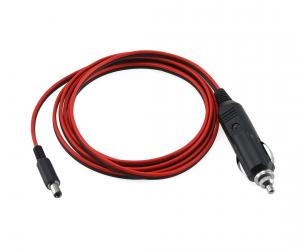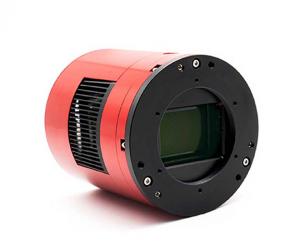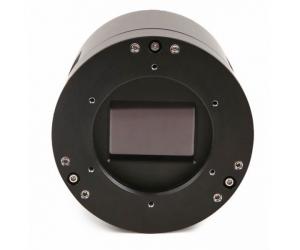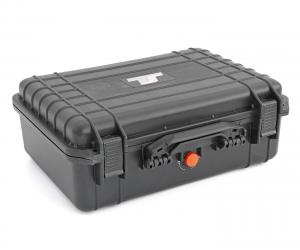- Telescopes
- Overview:
Telescopes - Achromatic Refractor
- Apochromatic Refractor
- Overview:
Apochromatic Refractor - ED Refractor - less color aberration than an achromatic
- SD APO - color free 2-element APO objective
- EDT APO - 3 element ED objective
- High End APO with 3-element APO objective - no color aberation
- Flatfield APO with flat field for Astrophotography
- All Apos and EDs from all manufacturers - large overview
- TS APO and ED from Japan with high quality optics
- Overview:
- Newtonian Telescopes
- Dobsonian Telescopes
- RC Ritchey Chretien Telescopes
- Casssegrain Telescopes
- Reflektor Telescopce with Lens Correcture
- Maksutov Cassegrain Telescopes
- GoTo Telescopes
- Solar Telescopes H-Alpha
- Overview:
- Mounts Tripods Rings Rails Power Supply ...
- Overview:
Mounts Tripods Rings Rails Power Supply ... - Mounts Equatorial with GoTo
- Mounts Equatorial without GoTo
- Mounts Azimutal with GoTo
- Mounts Azimutal without GoTo
- Mounts GoTo - Harmonic Drive
- Travel mounts for astro imaging
- Tripods Piers Polar Wedges
- Mount Control & Electronics
- Dovetail Clamps, Plates and Mount Adapters
- Tube Rings
- Power Supply
- Counterweights Balance Weights
- Mount Accessories - Other
- Overview:
- Telescope Accessories
- Overview:
Telescope Accessories - Eyepieces
- Barlows & Reducer Lenses
- Diagonal Mirrors and Prisms
- Binocular Viewers
- Finder Scopes
- Telescope Collimation and Test
- Cleaning Tools
- Transport and Storage
- Dust protection for Telescopes & Accessories
- Stray Light Protection
- Dewcaps and Heater
- Focusers, Adapters, Motorfocus
- Telescope DIY & Improvement
- Other telescope accessories
- Replacement Parts
- Overview:
- Filters
- Overview:
Filters - Color Filters and Color Filtersets
- Nebular Filters for Visual Observing
- Neutral-Density and Polfilter
- Photo Narrowband Nebular Filters
- Photo Broadband Filters
- Photo Planetary Filters
- Photo R-G-B and IR Cut Filters
- Photo - Filtersets
- Photometric Filters
- Clip Filter for DSLR Cameras
- Filter Wheels and Filterslider
- Solar Filters for white light
- Solarfilter for H-Alpha and Calcium
- Overview:
- Adaptors
- Overview:
Adaptors - Adapter 1,25" and 24,5mm
- Adapter 2"
- Adapter T2 - M42x0.75
- Adapter M48x0,75
- Adapter M54
- Adapter SC
- Adapter M63
- Adapter M68
- Adapter to other Threads
- Adapter Extensions
- Adapter camera bayonet
- Adapter Objective Filterthread
- Adapter Quick Changing , Rotation
- Adapter Eyepiece Projection
- Adapters Tilting
- Overview:
- Astrophotography and Photography
- Overview:
Astrophotography and Photography - Cooled Cameras
- Cameras without Cooling
- Deep-Sky Cameras uncooled
- Set-Offers Camera, Filter, Wheels
- Acessories for Cameras
- Travel mounts for astro imaging
- Imaging Correctors for Telescopes
- Autoguiding Cameras & Sets
- Everything for Guiding
- Focusing aids - Bahtinov mascs
- Flat Field foils and boxes
- Lenses for Cameras
- Piggyback Camera Holder
- Camera Bags, Photocases & more
- Digital Camera and Smartphone Adapter
- Other photo accessories
- Overview:
- Binoculars, Spotting Scopes, Microscopes, Range Finders
- Overview:
Binoculars, Spotting Scopes, Microscopes, Range Finders - Roof Prism Binoculars
- Binoculars with Porro prisms
- Binoculars from 100mm Aperture
- Binoculars with 1,25 inch eyepieces
- TSMX APO Binoculars
- Binoculars for Astronomy
- Binoculars Hiking Bird watching
- Monoculars - Opera Binoculars
- Accessories for Binoculars
- Spotting Scopes
- Range Finders
- Microscopy
- Bags for Phototripods & Binoculars
- Overview:
- Phototripods and Binomounts
- Books, Software
- Overview:
Books, Software - Books for Astronomy Beginners
- Star Charts and Planispheres
- Books about our Solar System
- Observing Tips for Amateurs
- Popular Astronomy Literature
- Teaching material
- Astrophotography books
- Telescopes, Observatories, Construction
- Calendars Yearbooks
- Software, Star Charts
- Books for Microscopers
- Books Nature and Animals
- Nature Photography TimeLapse
- Overview:
- Night Vision, Magnifiers, Weather, Domes & more
- Beginner Astronomy and Gift Ideas
- Second Hand & Special Offers
- New products
Manufacturer: -TS Zubehör
Product number: TS455MP
EUR4190.00new
EUR 4.190,00
incl. 19 % VAT (DE)
The VAT indicated refers to that applicable in Germany. After logging in, the VAT amount is adjusted to the applicable VAT of the stored delivery country. Therefore, the final price may vary accordingly.
excl. 6.95 € shipping costs (DE)
more details to the shipping costs ...Please log in to calculate shipping costs to your country.
There are no reviews for this product
- Details..
- Technical data..
- In the box..
- Manufacturer infos..
- Safety informations..
TS SkyEye 62AM Full Frame Monochrome Astro Camera with Peltier Cooling
This modern camera uses the latest Sony IMX455 16-bit back-illuminated ADC sensor in full-frame format. With 3.76 µm pixels, the camera can be used on almost all astronomical telescopes with good illumination.Due to the high sensitivity of about 80% QE we recommend the camera also for somewhat slower telescopes like RC, EHD, ACF Cassegrains or also refractors. Even at f/7 or f/8 beautiful astrophotos can be taken in only one night.
Back-illumination technology:
Sony´s back-illuminated CMOS imaging sensor improves sensitivity and noise reduction - key factors in improving image quality - by changing the basic pixel structure from front- to back-illuminated. The advantages of CMOS image sensors, such as low power consumption and high operating speed, have been retained.
The back illumination improves the light acquisition and increases the amount of light at the same time. This makes significantly shorter exposure times possible and leads to an improved quantum efficiency of 80 %.
Sony has developed a unique photodiode structure and on-chip lens optimized for backside-exposed structures, this results in higher sensitivity and lower random noise without light by reducing noise, dark current and defective pixels compared to the conventional front-side-illuminated structure.
No amp glow:
Conventional CMOS sensors produce a faint infrared light source during operation, which can often be seen as a telltale sign of "amp glow" in the corners of uncalibrated images. Because this camera´s sensor uses zero amp glow circuitry, you don´t have to worry about "amp glow" even when using high-gain, long-exposure images.
Optimal support before and after purchase through Teleskop-Service:
Through many years of experience, we can offer you optimal advice and also a very good after-sales service. We can perform almost all services at our premises. For a professional service we have among other things also a clean cabinet, where we can carry out repairs, cleaning etc. under dust exclusion.
Connection to correctors with M48 thread and 55 mm working distance with filter changer:
Most coma correctors for Newtonians or field flatteners for refractors have 55 mm working distance and a M48x0.75 thread on the camera side. Here is an interesting suggestion for the connection. The camera has a back focus of 17.5 mm from the M54x0.75 female thread. Please note, however, that with very fast telescopes (f/4 or faster) even the M48 thread causes a slight edge shading. You can get rid of this with a "flat".
The adapters are from the camera to the corrector:
The manufacturer of the camera is ToupTek:
As one of the largest manufacturers of professional cameras for digital photography, ToupTek brings the necessary knowledge for cameras that just work. Teleskop Service receives the cameras directly from the manufacturer, we are in direct contact with ToupTek to provide you with first class service.
Product videos:
Teleskop-Service has created an overview video for the ToupTek cameras in English and with subtitles in German and other languages:
A second video deals with the setup and configuration of the cameras:
Detailed instructions:
Detailed instructions are available from the manufacturer, you can download the PDF here.
Drivers and Software:
ToupTek provides drivers and software for this camera, you can download them here.
Good storage is an important preventive measure against dew and also extends the service life:
After use, put the camera straight into the TS Protect Case and add some silica gel. During storage, the silica gel absorbs the moisture from the camera. At the same time, the penetration of moist room air is prevented. Dry storage can even partially regenerate the small desiccant tablets in cooled cameras. Your camera or accessories are always ready for you in optimum condition. You can find the silica gel and the case in our product recommendations.
The cameras are not airtight, so if the camera remains on the telescope, it is exposed to moisture. The small amount of desiccant in the camera can protect the sensor and the inside of the protective glass from moisture for the duration of the exposure, but not for days on end. Moisture problems can be the result. A simple trick is to stretch a plastic bag around the focuser to which the camera is attached so that no air can get in. Silica gel is placed in a small cloth bag inside the plastic bag. This will also create a "dry climate zone" for the camera on the telescope. This allows you to leave the camera on the telescope for a few days for an imaging session lasting several days.
In the medium and long term, however, this is no substitute for proper storage in an airtight case with silica gel.
| Sensor type: | Sony IMX455 monochrome |
| Sensor size: | 36 mm x 24 mm, diagonal 43.3 mm |
| Pixel size: | 3.76 µm |
| Resolution: | 9568x6380 (61 MPixels) |
| Shutter: | Rolling Shutter |
| Exposure time: | 0.1 ms to 3600 s |
| Readout speed at full resolution: | 6.2 fps |
| ADC: | 16 bit |
| Cooling: | Powerful Peltier cooling up to 35 °C below ambient |
| Full well: | 51 ke- |
| Readout noise: | 2.58 e- to 0.89 e- |
| Sensitivity: | Peak 80% QE minimum |
| Zero Ampglow circuit: | Yes |
| Entry window: | AR-coated glass |
| Power requirements: | 12 V, 3 A |
| Anti-dew heater: | Yes, maximum 6 W |
| Power connection: | 5.5/2.1 mm coaxial power connector (2.1 mm DC connector) |
| Telescope connection: | M54x0.75 female thread |
| Working distance from internal thread to sensor: | 17.5 mm |
| Diameter: | 89 mm - Height 103 mm |
| Weight: | 0.718 kg |
| Manufacturer / Importeur: | Teleskop-Service Ransburg GmbH |
| Street: | Von-Myra-Str. 8 |
| ZIP / City: | 85599 Parsdorf |
| Country: | Germany |
| Telefon number: | +49 89 99228750 |
| Email: | info@teleskop-service.de |
| Website: | www.teleskop-express.de |
Safety informations: PDF Download
Recommended accessories
Adaptors
Cleaning & Collimating
General Accessories
Photo Acessories
Power Supply
Similar Products
ZWO Monochrome Astro Camera ASI 6200MM Pro cooled, Chip D= 43.3 mm
EUR 4.990,00RRP EUR 5.390,00you save 7.4% (EUR 400,00)
TS-Optics ToupTek SkyEye24AC Full Frame Color Astro Camera, cooled - Sensor D=43.3 mm
EUR 2.990,00RRP EUR 3.490,00you save 14.3% (EUR 500,00)
Transport & Covers
TS-Optics Protect Case waterproof hard case - width 407 mm
EUR 62,90RRP EUR 74,90you save 16% (EUR 12,00)
TS-Optics Protect Case waterproof hard case - width 470 mm
EUR 69,90RRP EUR 84,90you save 17.7% (EUR 15,00)
Reviews














